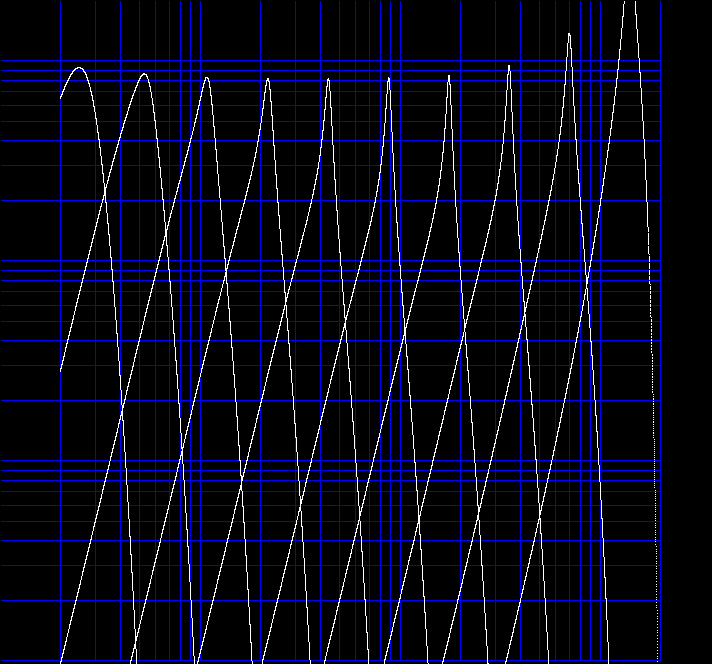
This log-log plot shows one of 12 filters for each octave. This is of course the equal tempered scale. This scale fits well with human hearing.

My goal was to combine sufficient realism with minimal use of computation, and this I have achieved. The sharp cut-offs of the filters are made by slicing frequencies by cascaded filters, similar to the way the basilar membrane works. This gives about 1/3 octave -3dB frequency separation, like in the real ear. I then sharpen the filters with resonators, again like real living ears do.
(I might use better digital filters later, but for now they and the resonators are constructed traditionally with the bilinear transform, which works well below half of the Nyquist frequency, (<10 KHz) but become a little distorted above that. Human hearing is a little distorted in that range too, so this is not a problem for the simulator.)
I also simulate some of the processing that goes on in the brain, but that is not quite finished yet. The biggest problem is that science do not yet know precisely what goes on in there, but since I do have a brain of my own which I can sense directly from the inside, and I now know what goes into my brain, and that the brain is an information processor, not a data processor, I should be able to deduce something sensible. I already have some stuff working, and it really shows harmonies, tones and stuff, somewhat like what it hears like, but I am not quite there yet. I do not know how long it will take, or if I will get time to work further on this project.